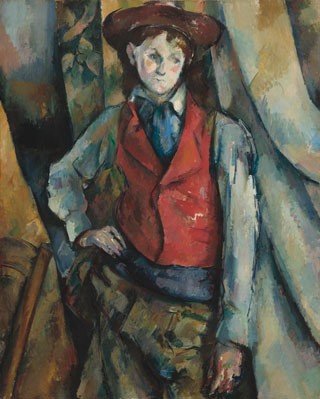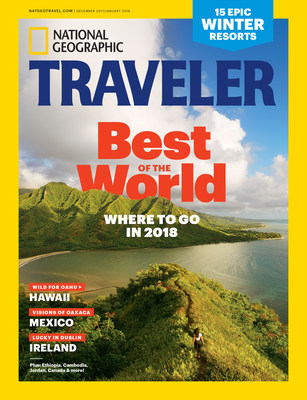Sign Up For Open-Air Market Classes, City Tours and Events
YUCATÁN, MEXICO – With temperatures dropping and the frigid winter months preparing to roll in, Yucatán is the ultimate getaway for U.S. travelers seeking sun, fun and culture. Temperatures average 85ºF during the day with cool evenings in the dry season (November – May), making winter the ideal time to explore Yucatán and enjoy the markets, archaeological sites, and cultural events that give this region its character.
City Tours
Travelers can take advantage of the warm weather and explore the Yucatán capital of Mérida and its rich history through guided city tours, including:
· The open-topped double-decker Turibus allows travelers to jump on and off along the route to explore the city’s colonial buildings, monuments, and other landmarks on their own time. For those short on time, Turibus offers a complete one-hour guided city tour that visits more than 30 sites of interest (US$7.86 adults, US$4.19 for children 5-12). For more information, visit www.turibus.com.mx.
· Explore the sights of Mérida on foot with a bilingual guide during a free 90-minute guided tour offered by the tourism board – a great way for travelers to get acquainted with the city at the start of their visit. The tour starts at the City Hall Tourist Information booth every day beginning at 9.30 a.m. For more information, visit www.merida.gob.mx/capitalcultural.
· Travelers preferring to set out on their own can jump on a bike and take part in La Bici Ruta (Bike Route) each Sunday, a popular event where locals and visitors take over the streets to discover and enjoy the ancient city. Several miles of streets are closed to vehicular traffic, making this a safe and fun event for all. Bike rental rates vary.
Market Classes
Visitors can enjoy the sun while shopping at Mérida’s three main bustling open-air markets: Mercado Lucas De Galvéz, the most well-known market; Mercado Santiago, a more intimate market; and Slow Food Market, a haven for locals. Several tours are available for travelers to experience the hustle and bustle of Mérida’s markets, such as:
· The “Mérida Market Tour and Cooking Class” includes a market tour with a bilingual guide who will allow participants to converse with vendors as they select seasonal ingredients for a cooking class with a local host. Rates start at US$60 per person. For more information, visit viator.com/tours/Merida/Merida-Market-Tour-and-Cooking-Class/d5195-5207MIDCOOK.
· The boutique hotel Casa Lecanda offers the “Local Market Tour Class” inclusive of a market tour with a local chef, welcome drink, and a four-course meal utilizing local products and ingredients that have been used in Mexican cuisine for hundreds of years (US$140 per person with a two guest minimum). Prices may vary according to number of participants. For more information, visit casalecanda.com/activities/cooking-tasting-classes.htm.
Eco-Adventures
Travelers can embark on a variety of eco-adventures during their time in Yucatán, whether swimming in underground cenotes, paddling the waterways by kayak, or seeing flocks of colorful birds. For visitors seeking the true water culture experience, a bucket-list item is swimming in one of the region’s sacred cenotes, underground freshwater reservoirs revered by the Maya. Another great water activity is kayaking along the coast of Yucatán in Celestún and Río Lagartos. While rowing around, travelers are advised to keep an eye out for flocks of flamingos, as there are more than 25,000 in the region and the best time to observe the birds is between December and April.
· Bikes are provided at Los 7 Cenotes to explore the private reserve’s seven cenotes, most of which provide the option of swimming and snorkeling. While there, visitors may enjoy a view of centuries-old Ceiba trees and beautiful gardens. For more information, visit www.xperiencia7cenotes.com.
· The best way to see the Celestún Biosphere Reserve is by water. Guides will lead boat rides through mangroves, pointing out the wildlife and providing the best spot for a swim. For more information, visit www.viator.com/Riviera-Maya-and-the-Yucatan-attractions/Celestun-Wildlife-Refuge/d770-a14486.
Events
Mérida is celebrating being named the 2017 “American Capital of Culture” by offering free cultural activities every day of the week throughout the year, including Vaquería (country dance) on Mondays; trova (new Cuban music) on Tuesdays; cemetery tour on Wednesdays; serenade in Santa Lucía on Thursdays; pok ta pok ballgame on Fridays; Mexican night on Saturdays; and Bike Route on Sundays. Annual festivals taking place in the winter include“Mérida Fest” in January, consisting of several weeks of nightly fiestas celebrating the city’s founding; and Carnaval of Mérida in February, with its colorful costumes, floats, artists, concerts, music and more.
For additional ways to visit Yucatán or to view a full list of tour packages, visit gotoyucatan.com/tour-packages.
About Yucatán
The state of Yucatán is located in southeastern Mexico, along the Gulf of Mexico in the north section of the Yucatán Peninsula. The region boasts both a coastline of pristine beaches and interior sections rich with natural preserves. Yucatán is home to several designated UNESCO World Heritage sites including the well-preserved Mayan towns of Chichén Itzá and Uxmal, as well as two “Magical Towns“ – the former Spaniards regional capital of Valladolid and the colorful Colonial-era town of Izamal. The state’s capital, Mérida features a vibrant culinary scene, modern museums, and historical attractions, while its main port city of Progreso is a popular cruise ship destination famous for its pier that extends an impressive four miles into the Gulf of Mexico. Yucatán has become an increasingly popular tourism destination for its diverse attractions that include natural underwater swimming pools, world-famous archeological and historical locations, unique luxury hacienda accommodations, and diverse natural wildlife.
Travel to Yucatán is easily accessible via Manuel Crescencio Rejón International Airport (MID), with several non-stop daily flights from the United States and Canada. The airport is conveniently located approximately 10 miles from downtown Mérida, a 30-minute drive.


